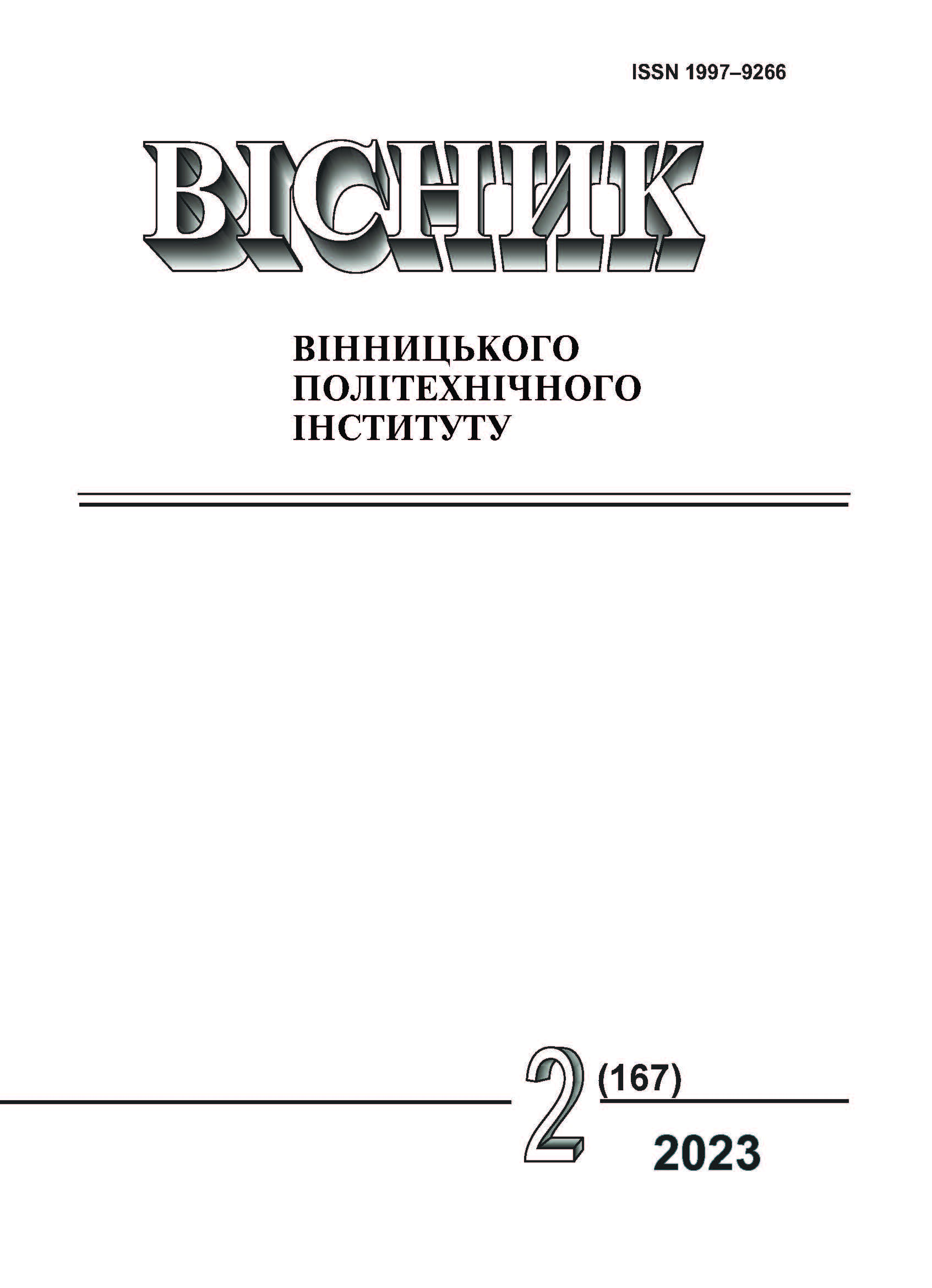Application of Frequency-Pulse Signals for the Synthesis of Interference-Free Digital Radio Devices
DOI:
https://doi.org/10.31649/1997-9266-2023-167-2-145-153Keywords:
signal/noise ratio, immunity, radio pulse coding of information, frequency-pulse logic function, radio frequency logic element, combined table, deviation functions, membership functionsAbstract
Using the generalized criterion of fault tolerance of digital information processing devices, the expediency of using frequency-pulse modulation for the construction of fault-resistant logic elements of special purpose has been proved. The synthesis of structural schemes of basic logical elements that use frequency-pulse encoding of information was carried out. Analytical dependences were obtained for determining the values of the auxiliary signals in the case of using n variables. It is shown that for the synthesis of such elements it is necessary to build a combined table, the first and second columns of which display all possible combinations of frequencies of input signals, the third column displays the values of frequencies of output signals. The fourth column displays the sum of the frequencies of the input signals, which are called full intermediate results. The fifth column displays the difference between the full intermediate result and the value of the frequency of the output signal for the corresponding sets of input signals, that is, the deviation functions are determined. The number of different values of this function determines the number of the auxiliary signals, and these different values arethe auxiliary signals. The next two columns display the matching functions. On the basis of which membership functions are built, which, in fact, provide signal filtering. An operator description of the device is built on the basis of the combined table, rejection functions, correspondence table and membership functions.
In this operator description, the F — operator is used, which performs the function of frequency conversion, Фв the operator performs the function of a high-pass filter, the T — operator performs Ф0с the function of signal branching, the operator A performs the function of a power adder, the operator performs the function of filtering, which is tuned to the frequency ω0, Ф1с — operator performing the band-pass filtering function, which is tuned to the frequency ω1. Since the proposed operators and elements that perform their functions make it possible to build logical elements AND, OR, NOT, which are the basis in the case of pulse-potential representation of information, it is concluded that the operators listed above are the basis for the case of chatbot-pulse coding of information .
The processes of signal passage and the principles of operation of AND, OR, NOT radio-pulse logic elements are considered, which makes it possible to draw a conclusion about their efficiency.
References
О. А. Нагорнюк, і М. В. Бугайлов, «Метод визначення кількості частотних елементів на символ радіосигналів із внутрішньо символьним псевдовипадковим перестроюванням робочої частоти та частотною маніпуляцією,» Вісник КПІ, серія Радіотехніка та радіопаратобудування, т. 84, с. 48-56, 2021.
А. П. Бондарев, «Теоретичні засади та методи забезпечення завадостійкості пристроїв фазової синхронізації на етапі проектування.» дис. д-ра. техн. наук, Інститут телекомунікацій, радіоелектроніки та електронної техніки, Національний університет «Львівська політехніка», Львів, 2006.
J. Wan, D. Zhang, W. Xu, and Q. Guo “Parameter Estimation of Multi Frequency Hopping Signals Based on Space-Time-Frequency Distribution,” MDPI Symmetry, 18 p., 2019.
H. A. Hamed, A. K. Abdullah, and S. Al-waisawy, “Frequency Hopping Spread Spectrum Recognition Based on Discrete Transform and Skewness and Kurtosis,” International Jornal of Appliied Engineering Research, vol. 13, no. 9, pp. 7081-7085, 2018.
А. О. Нагорняк, «Метод автоматичного визначення часових параметрів радіосигналів із псевдовипадковим перестроюванням робочої частоти на фоні вузькосмугових перешкод,» Проблеми створення, випробування, застосування та експлуатації складних інформаційних систем, зб. наук. праць. Житомир ЖВІ, вип. 15, с. 53-64, 2018.
В. М. Кичак, «Метод синтезу частотних логічних елементів,» Вимірювальна та обчислювальна техніка в технологічних процесах, № 2, с. 187-192, 2000.
М. М. Сумик, І. Н. Прудиус, і Р. М. Сумик, Теорія сигналів. Львів: Бескид Біт, 2008, 232 с.
Л. Б. Ліщинська, і М. А. Філинюк, «Радіочастотний логічний елемент,» Патент України Н03К 19/20(2006.01). № u201000346, 25.05.2010.
В. М. Кичак, «Радіоімпульсний логічний елемент АБО,» Патент України Н03D 19/20(2006.01), Н03K 19/20(2006.01). № u202107569, 08.02.2023.
О. М. Рома, Є. В. Пелешок, В. Д. Голь, і С. В. Василенко, «Аналіз завадозахищеності когерентної демодуляції синхронних взаємно неортогональних цифрових сигналів з мінімальною частотною маніпуляцією,» Вісник КПІ, серія Радіотехніка та радіопаратобудування, т. 79, с. 48-55, 2019.
Downloads
-
PDF (Українська)
Downloads: 95
Published
How to Cite
Issue
Section
License

This work is licensed under a Creative Commons Attribution 4.0 International License.
Authors who publish with this journal agree to the following terms:
- Authors retain copyright and grant the journal right of first publication.
- Authors are able to enter into separate, additional contractual arrangements for the non-exclusive distribution of the journal's published version of the work (e.g., post it to an institutional repository or publish it in a book), with an acknowledgment of its initial publication in this journal.
- Authors are permitted and encouraged to post their work online (e.g., in institutional repositories or on their website) prior to and during the submission process, as it can lead to productive exchanges, as well as earlier and greater citation of published work (See The Effect of Open Access).





